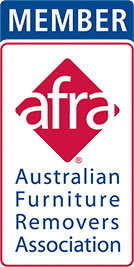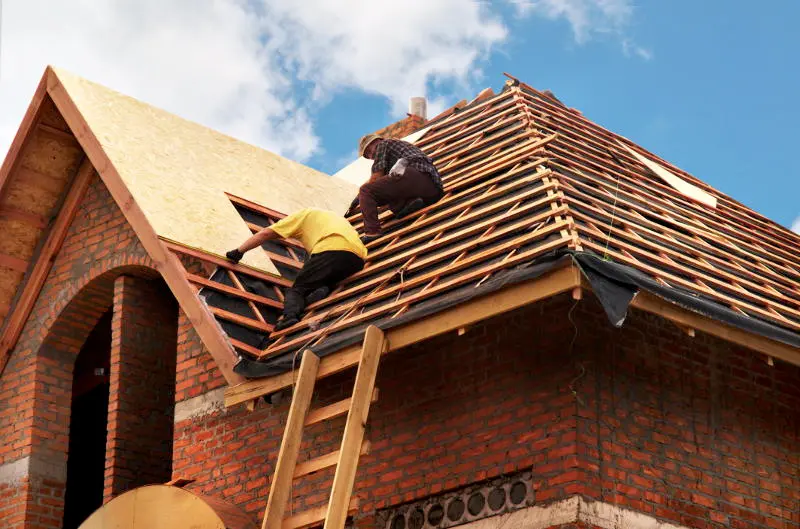Move-in Ready: Handling Roof and Floor Repairs Before You Unpack
Are you about to relocate to a new house or apartment? Making your new place feel like home requires careful consideration, whether you’re a first-time homeowner or a seasoned renter. Handling any necessary repairs, especially those connected to your roof and floors, should be one of your top priorities for move-in-ready homes.
Here are some reasons why finishing these tasks or home improvement projects before unpacking at a new property is crucial, as well as some advice for having the process go as smoothly as possible.
Importance of Roof and Floor Inspections
One of the most crucial parts of your house is the roof since these guards you from the weather and keeps your property secure. On the other hand, your flooring acts as a functional area for walking and placing furniture and a decorative element. These elements are essential to creating a secure and comfortable living space and enhancing your house’s overall aesthetic appeal.
Before moving into a home or apartment, you should inspect the roof and floors so you won’t have unaddressed problems come move-in day. Ask your real estate agent to disclose any possible issues with the whole house because this affects the resale value of the property.
Taking care of roof and floor repairs in your entire house:
- Preventing Further Damage: Addressing roof and floor repairs early on helps prevent the worsening of existing issues. Roof leaks, for example, can lead to water damage, mould growth, and compromised structural integrity if left untreated. Addressing these concerns before moving in can save money on more significant maintenance.
- Ensuring Safety: Damaged roofs and floors pose safety risks to occupants. A weakened roof may be prone to collapse or further damage during severe weather conditions. Cracked or uneven floors can lead to trips, falls, and injuries. Now that you know these issues will be resolved before you move in, you and your family can rest comfortably.
- Preserving Property Value: A dream home kept up nicely keeps its value and curb charm. If you decide to sell your home in the future, putting off roof and floor repairs could lower its value and deter potential purchasers. The value and marketability of your house are preserved when these repairs are taken care of in advance.
- Saving Money: While making repairs before moving in may seem like an extra investment, doing so will save you money on costly repairs. Proactively fixing issues and doing regular maintenance prevents them from escalating into more significant problems requiring extensive repairs or full replacements. Timely home inspection and repair also minimise the risk of secondary damage, which can be more expensive.
- Peace of Mind: Moving into a new house should be enjoyable and stress-free. You may rest easy knowing that you’ve taken care of important components of your new home by ensuring your roof and floors are in good condition. It frees your mind from future repair concerns so that you can concentrate on settling in and enjoying your new environment.
Types of Roof Repairs to Consider Before You Move In
So, what kinds of repairs or renovation project should you look for for your roof? Here are a few to keep in mind:
- Missing or Damaged Shingles: Check for any shingles that are cracked, curling, blistering, or completely missing. Damaged shingles can expose the underlying layers of the roof to water infiltration and should be replaced promptly.
- Leaks and Water Damage: Look for signs of water stains or discolouration on the ceiling or walls, as they indicate potential leaks. Addressing leaks early on can prevent further damage to the roof structure and interior of the home. Inspect the attic for any signs of water intrusion, such as wet insulation or damp spots.
- Sagging or Uneven Areas: Any roof portions that seem drooping or unequal deserve special attention. A qualified roofer should examine this as it may indicate deeper structural problems, such as decaying or weakening support beams.
- Damaged Flashing: Flashing is the metal material used to seal joints and transitions on the roof, such as around chimneys, vents, and skylights. Check for any loose, rusted, or damaged flashing that may compromise the roof’s waterproofing.
- Clogged or Damaged Gutters: While not directly part of the roof, clogged or damaged gutters can lead to water backup and overflow, damaging the roof and its underlying structure. Ensure that gutters are clear of debris and securely attached to the roofline.
Hiring a professional roofing contractor is advisable if you need clarification on any potential roof repairs or notice significant issues. They know how to evaluate your roof’s condition and provide you with sound advice on whether to fix it or replace it.
Floor Repairs for a Move In Ready Home
When it comes to your floors, there are a few things you should be on the lookout for:
- Cracks or Gaps: Check for any damages or gaps in the flooring material, such as tiles, hardwood, or laminate. These can be tripping hazards and may indicate structural issues or movement in the subfloor.
- Uneven Surfaces: Walk around the room and pay attention to areas where the floor feels uneven or unstable. This could indicate underlying damage, rot, or inadequate installation.
- Loose or Damaged Tiles: If you have tiled floors, look for loose, chipped, or cracked tiles. Loose tiles can indicate problems with the adhesive or subfloor, while damaged tiles can be a safety concern and may require replacement.
- Water Stains or Discoloration: Water stains or discolouration on the floor surface or baseboards can indicate leaks or moisture issues. This is particularly important to address, as prolonged exposure to moisture can lead to mould growth and further damage.
- Worn-out or Faded Areas: High-traffic areas may show signs of excessive wear, such as fading, scratches, or worn-out carpeting. Evaluate the condition of these areas and consider whether repairs or replacements are necessary to restore the appearance and functionality of the floor. The previous owners may have been remiss in refinishing hardwood floors because of repair costs, but if you want to freshen up your living spaces, a newly renovated home is ideal.
- Squeaky Floors: Listen for squeaking or creaking sounds when walking on certain floor areas. Floorboards that are loose or have problems with the subfloor can cause squeaks, which may require strengthening or fastening. You can make repairs part of your home upgrades or consider replacing flooring if the damage is really bad.
A professional flooring contractor or skilled handyman should be consulted if these problems are discovered. They can evaluate the level of structural damage and advise on the necessary upkeep to get the floors back to peak condition.
Tips for Handling Repairs in Your New House
If you’re planning to handle repairs before moving in, here are a few tips to help you manage the process:
- Scheduling repairs ahead of time: Repairs should be scheduled whenever possible. When you’re ready to start unpacking during the moving process, the last thing you want to do is wait for a home improvement contractor to show up to fix the HVAC system or air ducts.
- Set realistic timelines: Remember that some repairs can take longer than others. For example, plumbing systems or replacing an exterior wall is more complicated than installing smoke detectors or fixing a gas line. Be realistic about how long each project will take, and plan the move-in process around those timelines accordingly.
- Work with professionals: While some smaller repairs might be easy to handle independently, working with a professional for more significant projects is best. Look for roofers or floor repair companies with good reputations and plenty of experience. Prior to this, hire a credible home inspector to make an edited home repair list for you so you can prioritise which repairs to make.
- Stay flexible: Even with the best-laid plans, something might come up and throw your timelines off track. Have an open mind and be as accommodating as possible.
- Communicate with your landlord or seller: If you’re renting your new home or buying from a previous owner, communicate clearly with them about any repairs that need to be made. They may be willing to handle some repairs or cover some costs such as installing carbon monoxide detectors, updating electrical outlets or some other fixer upper.
If you follow these guidelines, you can rest assured that the repairs to your new home will be completed quickly and professionally, giving you more time to settle in.
Conclusion
While exciting, moving into a new home can sometimes be overwhelming. It’s wise to check the roofing, and flooring, and work on home improvements before settling down.
Take the necessary measures and hire a reputable moving company like Optimove to assist you with packing materials such as bubble wrap, and other moving supplies, or the unpacking process. Letting experts handle the tasks they do best will save you a lot of time, effort, and stress.





































